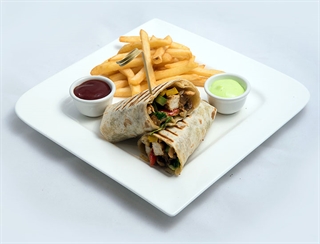How Portion Control Generates Confidence
Serving Solutions
2020.01.11
Original Post 2016.8.05
Most consumers flock toward quick, reliably delicious restaurants when they need to squeeze a meal into their jam-packed schedules. Their time is too valuable to stop at a restaurant from which they've received less-than-delicious food. Consumers want to eat at a restaurant where everything tastes great every time they visit. So why not do everything you can to achieve perfect portions?
Portion control has done wonders for the foodservice industry on both the business and consumer end; not only does it save restaurants money on inventory and training costs, but consistent flavors and portions – whether flavor shots in a specialty coffee drink, or something as simple as adding special sauce to a burger – generate consistent customers.
Health-focused
Diners are growing more health conscious each day; grassfed, antibiotic-free meat, organic produce and healthy alternatives replace the high-calorie, preservative-packed options of past decades. But while it's important to monitor what types of foods they eat, they're also becoming equally aware of how much they consume. Calorie counts are almost ubiquitous on menus, and some companies have even gone so far as to display how much exercise it takes to burn off a specific food. Switching mayo for avocado spread will only get you so far if you don't regulate the amount added to a sandwich.
Having a portion-controlled pump or scoop back-of-house ensures all employees have the ability to portion food correctly – whether it's coffee sweetener, pasta sauce, or sandwich toppings – so diners can keep to their goals.
Cost-conscious
Over-portioning and condiment waste aren't linked only to guests; back-of-house portion discrepancies not only have the ability to compromise taste and health aspects of a dish, but they also eat into your profits one dish at a time.
Imagine you're working a little league concession stand serving nachos, fries, and jumbo pretzels and all profits go to the teams. You can get about 96 one-ounce servings from your hot cheese jar at 25 cents per serving. With no proper portion utensils, the volunteers working the counter simply drizzle cheese over the food or overfill the dedicated cheese section of a food tray, resulting in only 85 servings from the jar. That's $2.75 from one cheese jar the little league teams will never see.
Now, escalate the scenario to the volume of condiments and sauces a QSR chain might go through in one night. Even small inconsistencies recurring in each restaurant can add up to hefty losses. Portion-controlled equipment helps take the guess work out of food prep for new and old employees alike.
Flavor-minded
Other than poor customer service, one of the biggest turn-offs for a diner is hit-or-miss flavors – everyone's had that latte that tasted like hot water with foamed milk and just a hint of vanilla. All it takes is one bad experience and they'll be less likely to come back, especially with the number of restaurants diners can choose from these days.
Balance is key - too much aioli could diminish the natural flavors in a sandwich meat, while not enough heat on their wrap can leave a guest disappointed. Dispense housemade sauces easily using a portion-controlled pump, and flavors will always be on point.
Do diners a favor while helping business run smoothly: use portion-controlled equipment. Consistency generates confidence. Confidence in your dishes gives customers a reason to come back.